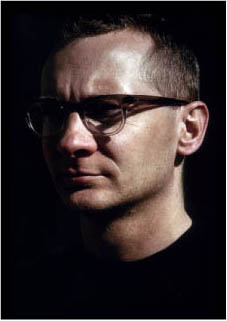

Al Auten went to high school in Springfield, Illinois. He received degrees in electrical engineering and radio television from the University of Denver. He joined the Navy during World War II and worked the technical side of radios, then became a ham radio operator with a first-class commercial radio-telephone license. On the American Mount Everest Expedition (AMEE), he was responsible for radio communication on the mountain and with the outside world. He reached Camp 5W, the highest camp on the West Ridge. After the AMEE he was elected chairman of the Colorado Ski Patrol and chairman of the Colorado Mountaineering Club. Auten lives in Wheat Ridge, Colorado, with his wife, Tai.
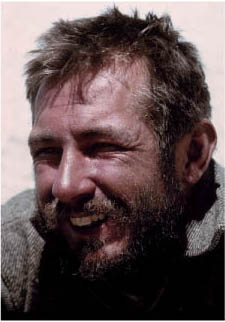
Barry Bishop grew up in Cincinnati, Ohio. He attended Dartmouth and the University of Cincinnati and received a Ph.D. in geography from the University of Chicago. He conducted glaciological research in Greenland, Antarctica, and the Himalaya and with three others made a first ascent of Ama Dablam, the first climb of a Himalayan peak in winter. On May 22, 1963, he summited Mount Everest with Lute Jerstad. Bishop served for thirty-four years on the National Geographic Society’s Committee for Research and Exploration, five of them as chair. He retired in 1994 to Bozeman, Montana, and died later that year. The National Geographic Society honored him posthumously with the Distinguished Geography Educator award. He is survived by his wife, Lila; one daughter, Tara; and a son, Brent, who became the first offspring of an AMEE Everest summiter to follow in a parent’s footsteps.
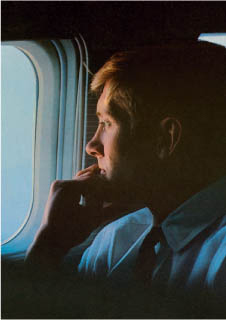
Jake Breitenbach grew up in Vancouver, Canada, attended Dartmouth, and received a B.S. in mathematics from Oregon State University. He climbed Denali, in Alaska, by the West Buttress (with Dave Dingman) and again by the Western Rib of the South Face, a first ascent with Barry Corbet. Before Everest, he worked as a guide in Jackson Hole, Wyoming, and co-owned a small restaurant and a ski and mountain equipment store. He died on Mount Everest in 1963, the first known death in the Khumbu Icefall. Mount Breitenbach in the Lost River Range of Idaho, the state’s fifth-highest peak, was named for him. He is survived by his wife, Lou, of Jackson Hole, Wyoming.
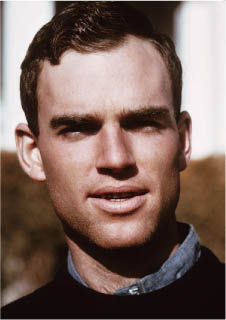
Barry Corbet was born in Vancouver, Canada, and attended Dartmouth College. He became a cutting-edge climber, skier, ski instructor, and outdoor filmmaker and produced or co-produced more than a hundred films. Before Everest, he worked summers for the Exum Guide Service, then founded Jackson Hole Mountain Guides. A bit of his legend is preserved as Corbet’s Couloir, a notorious double-diamond run at the Jackson Hole ski resort. After Everest, he continued as an adventure filmmaker and made first ascents of Mount Vinson and Mount Tyree in Antarctica. While filming in 1968, he suffered a spinal cord injury in a helicopter crash. He went on to become an important voice for people with disabilities, and for ten years he edited New Mobility, a magazine on disability issues and culture. Corbet is survived by his ex-wife, Muffy Moore, two sons, a daughter, and four grandchildren.
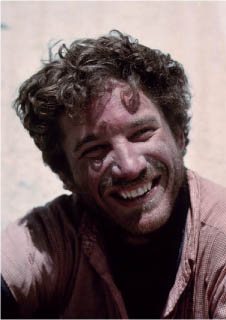
Dave Dingman grew up in Ann Arbor, Michigan. He guided in the Tetons, led the 1958 North American Mount McKinley expedition, and in 1959 climbed Alpamayo in Peru. He attended Dartmouth College and received his M.D. from the University of Michigan, followed by specialty training in general surgery, plastic surgery, and surgical oncology. He practiced in Salt Lake City, Utah, and was professor of surgery at the University of Utah when he retired in 1993. He served as medical director of Interplast, which provides surgical care in developing countries. Dingman and his wife, Barbara, are living in Ketchum, Idaho, where he recently designed and built an aerobatic airplane. Between them, they have eight children and fifteen grandchildren.
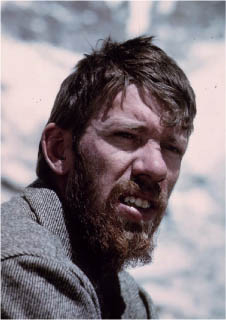
Dan Doody grew up on a farm in North Branford, Connecticut. He earned an undergraduate degree in agricultural mechanics at the University of Wyoming, and an M.F.A. in cinematography from USC. After serving in the US Army in Germany, he worked as a film editor and television cameraman and was associate producer for the program True Adventure. He made first ascents of the North Face of Edith Cavell in 1961 and a new route on Peru’s Nevado Chacaraju in 1964. In 1965 he and Craig M. Merrihue fell to their deaths while ice climbing in Pinnacle Gully in Huntington Ravine, Mount Washington. He is survived by two sisters.
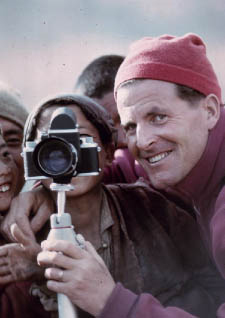
Norman Dyhrenfurth was born in Germany in 1918 and moved to Austria in 1923 and to Zurich, Switzerland, in 1926. His family became Swiss citizens in 1932; he became a U.S. citizen in 1944. Beginning in 1928, Dyhrenfurth climbed mountain ranges around the world. He led three of his seven major Himalayan expeditions and conceived of, organized, fund-raised for, and led AMEE ’63. He produced and directed Americans on Everest, National Geographic’s first television special, as well as numerous other award-winning films. Dyhrenfurth directed the Motion Picture Division of the Department of Theater Arts at UCLA and hosted a Los Angeles television program entitled Expedition! He and his parents were the subjects of a 2008 feature documentary The Third Pole, which aired widely across Europe. He has lived in Salzburg, Austria, with Maria Sernetz (Moidi) since 1970.
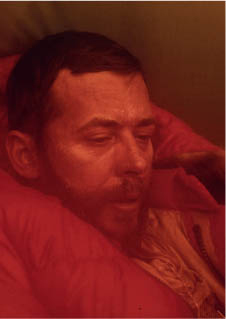
Dick Emerson was born in Salt Lake City, Utah. He received a B.A. from the University of Utah and an M.S. and Ph.D. in sociology and psychology from the University of Minnesota. He became one of the first climbing rangers in Grand Teton National Park, after serving with the U.S. Mountain Troops (10th Mountain Division) in Italy in World War II. He was an assistant professor of sociology at the University of Cincinnati and after the AMEE was a professor of sociology at the University of Washington until his death. His Teton climbs include first ascents of the South Buttress of Mount Moran, the Pendulum Pitch on the North Face of the Grand, and the North Face Direct on Teewinot. He was a member of the 1960 expedition that made the first ascent of Masherbrum in the Karakoram. He is survived by his wife, Pat, a daughter, Leslie, and three grandchildren. His son, Marc, died in a climbing accident in 1970.
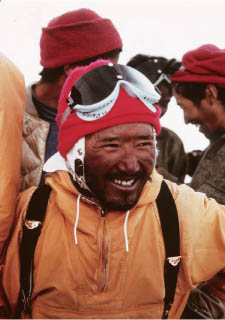
Gombu was born in Minzu, Tibet, and studied briefly at Rongbuk Monastery on the north side of Mount Everest. At sixteen, he was the youngest Sherpa on the 1953 British expedition that placed Edmund Hillary and Gombu’s uncle, Tenzing Norgay, on the summit. He summited Everest with Jim Whittaker in 1963, was the first person to climb Mount Everest twice, and made a second ascent of Nanda Devi. He received numerous international awards and medals and for nearly five decades directed the Himalayan Mountaineering Institute in Darjeeling, training many hundreds of Indian mountaineers. Gombu is survived by his wife, Sita, three daughters, one son, and nine grandchildren.
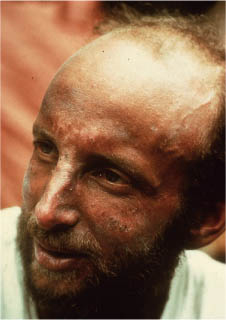
Tom Hornbein grew up in St. Louis, Missouri. He studied geology at the University of Colorado. His climbing and mountain rescue activities led him to medical school at Washington University, an internship in Seattle, and a residency and research fellowship in anesthesiology in St. Louis. He served as a Navy doctor in San Diego and then, after the AMEE, joined the department of anesthesiology and physiology and the department of biophysics at the University of Washington. He served as chair of the department for nearly sixteen years. His research resulted in more than one hundred journal articles and book chapters. He was a member of expeditions to Masherbrum, Paiju, Ulugh Mustagh, and Kangkarpo, in addition to the climb recounted in this book. He has six children. He and his wife, Kathy, live in Estes Park, Colorado, the place where he first met mountains.
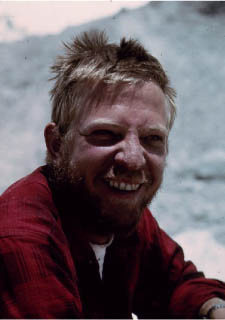
Lute Jerstad was born in Minnesota and grew up in Gig Harbor, Washington. He graduated from Pacific Lutheran University, where he was a varsity basketball player helping lead his team to the NCAA championships. He earned a master’s degree from Washington State University and a doctorate from the University of Oregon. After a short career as a college professor, he founded Lute Jerstad Adventures, a trekking, river rafting, and mountaineering company. Jerstad died on October 31, 1998, while trekking in Nepal, within several hours’ walk of Everest Base Camp. He was cremated in Kathmandu and his ashes were buried near the Tengboche Monastery, en route to Everest Base Camp. He is survived by his wife, Susan, and two daughters.
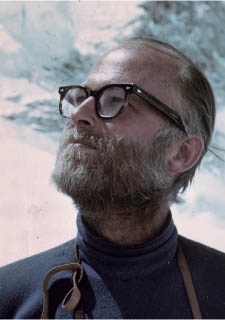
Jim Lester grew up in St. Louis, Missouri. He received his B.S. in psychology from Northwestern University, completed an M.A. and Ph.D. in psychology at UCLA, and worked as a clinical psychologist, teacher, and research administrator in the United States, Germany, St. Croix, and London. He published numerous articles in the field of psychology, including papers on group interactions and the stress of climbing Mount Everest. He was also a gifted jazz musician (piano, trombone, vocalist) and musical arranger. In 1994 he authored a book for Oxford University Press titled Too Marvelous for Words: The Life and Genius of Art Tatum. He is survived by his wife, Valerie, a son, a daughter, and a sister.
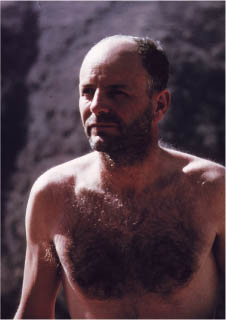
Maynard Miller grew up in Tacoma, Washington. He received degrees in geology and glaciology from Harvard, Columbia University, and the University of Cambridge. Since 1940 he has led or participated in sixty research projects and expeditions in fifty-four countries and has authored numerous academic papers. He founded and for sixty-two years directed the Juneau Icefield Research Project, where his dedication and instruction launched the careers of at least two generations of glaciologists and outdoor leaders. He was professor of geology and glaciology at Michigan State University and then at the University of Idaho, where he was dean of the College of Mines and Resources. He was also director of the Idaho Geological Survey and served as an Idaho state legislator. Miller has two sons and four grandchildren.
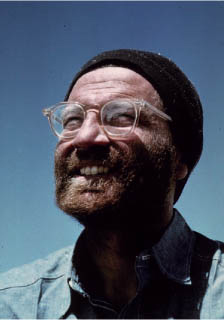
Dick Pownall grew up in Centerville, Iowa. He received a B.S. from Iowa State University and an M.S. in mathematics from the University of Colorado. He guided during summers for the Exum Guide Service from 1948 until the early 1960s, while teaching high school. After the AMEE, he worked as a high school principal, counselor, and administrator for Jefferson County, Colorado, ran a climbing school, and for twenty-three years was the volunteer coordinator for the World Cup ski races at Vail. He did the first ascent of the Direct North Face of Grand Teton in 1949 and climbed the peak 150 times, most recently in 2002. He also led an expedition to Mount Ararat, Turkey, and made numerous climbs in the Dolomites. Pownall has two children and two grandchildren, and lives in Vail, Colorado, with his wife, Mary.
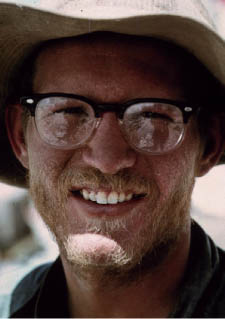
Barry Prather grew up near Ellensburg, Washington. He received an A.B. from Dartmouth College and a M.S. in geophysics from Michigan State University. After the AMEE, he participated in four Arctic and Antarctic trips, was named Washington State’s outstanding Farm Bureau president, and was his local Kiwanis chapter president and district Boy Scouts chairman. He served fifteen years on the board of directors of the Foundation for Glacier and Environmental Research and worked for many years with Maynard Miller’s Juneau Icefield Research Project. He spent fifty-three continuous days on the summit of Mount Rainier as part of Project Crater. Prather died in a car accident, along with an eighteen-year-old son. He is survived by his wife, two daughters, two sons, and three siblings.
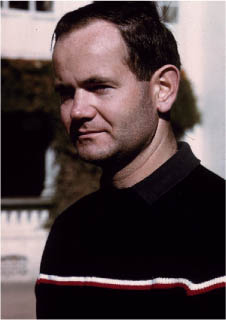
Gil Roberts was born in 1935 in Claremont, California, and launched his lifelong love affair with the mountains as a teenager in the Sierra Nevada. He graduated from Stanford Medical School in the early 1960s, was drafted into the Air Force as a flight surgeon, and ran the USAF Survival School in Reno, Nevada. In 1958 he was on Hidden Peak, the only 8,000-meter peak that was first climbed by an American team. After the AMEE, Roberts worked as an emergency room physician in Berkeley, California, and led treks in Nepal. He was a director of the American Himalayan Foundation, of which his widow, Erica Stone, is the president. Roberts is survived by Erica, a son, daughter, and four grandchildren.
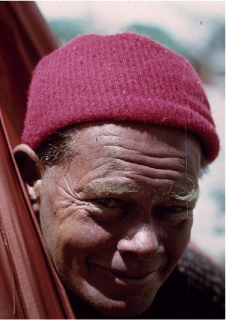
Jimmy Roberts was born in England and brought up in India, where his father was the headmaster of a school in the state of Gujarat. He had an extensive military career in the British and Indian armies from 1938 until 1964, when he decided to take early retirement, at the rank of lieutenant colonel, to develop commercial trekking in Nepal. He founded Mountain Travel Nepal, establishing most of the present-day trek routes in Nepal while launching a successful brand and a new industry. He led more than ten Himalayan expeditions, including to Masherbrum in 1938 and to Hiunchuli, Machapuchhare, and Annapurna II. He was granted honorary citizenship in Nepal and retired with his captive wild pheasants in Pokhara, where he passed away.
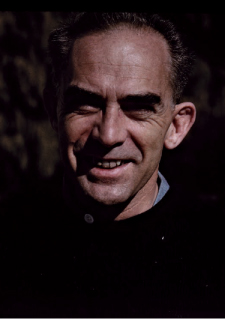
Will Siri, the AMEE’s deputy leader and scientific coordinator, was born in Philadelphia and earned a bachelor’s degree in physics from the University of Chicago in 1942. He helped launch the field of nuclear medicine in the early years of the Lawrence Radiation Laboratory, where he spent his career, and was assigned to the radiation laboratory of the Manhattan Project. Siri led the first large American Himalayan expedition to Makalu in 1954 and, in 1957, he was the field leader for an expedition to Antarctica to study the effects of extreme cold on the blood. From 1964 to 1966 he served as president of the Sierra Club and in 1994 received the club’s prestigious John Muir Award. He is survived by his wife, Jean, two daughters, and two grandchildren.
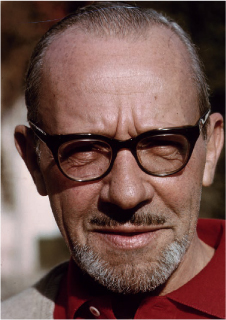
Jim Ullman was born in New York and received a B.A. from Princeton University. He was a writer and mountaineer and joined the AMEE as its official historian. His book Americans on Everest: The Official Account of the Ascent Led by Norman G. Dyhrenfurth was published in 1964. His other titles include The White Tower, Tigers of the Snows, High Conquest, The Age of Mountaineering, Banner in the Sky, River of the Sun, Wisdom’s Way, The Sands of Karakorum, Island of the Blue Macaws, The Day on Fire, Fia Fia, Where the Bong Tree Grows, Kingdom of Adventure, and Everest: The Other Side of the Mountain.
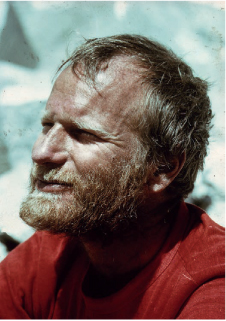
Willi Unsoeld was born in Arcata, California, and grew up in Coquille and Eugene, Oregon. He earned a B.S. in physics from Oregon State College, a B.D. from the Pacific School of Religion, and a Ph.D. in philosophy from the University of Washington. While working on his postgraduate degrees, he spent summers as an Exum guide in the Tetons. He taught religion and ethics at Oregon State until joining the Peace Corps, where, after AMEE, he was the second director of its Nepal program. He then worked with USAID in Nepal. After serving as executive vice president of Outward Bound, he was one of the founding faculty at Evergreen State College, becoming a pioneer in the field of experiential education. Unsoeld died in an avalanche in March 1979 while leading a group of college students on a climb of Mount Rainier. He is survived by his wife, Jolene, two sons, and one daughter. His other daughter, Nanda Devi, died in 1976 on the mountain for which she was named.
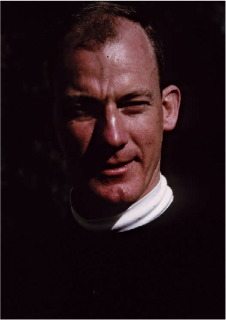
Jim Whittaker was born in Seattle and received a B.S. in biology from Seattle University. In 1955 he became the first full-time employee of Recreational Equipment, Inc. (REI), and was the company’s CEO in the 1970s. He helped train 10th Mountain Division troops during the Korean War. He was the first American to reach the summit of Mount Everest, with Nawang Gombu, on May 1, 1963. In 1965 he guided Robert Kennedy up Canada’s newly named and until then unclimbed Mount Kennedy. He led the first American ascent of K2 in 1978 and in 1990 led the Mount Everest Earth Day 20 International Peace Climb, which reached the summit from the north side. His autobiography, A Life on the Edge: Memoirs of Everest and Beyond, was first published in 1999 and reissued in 2013. He lives in Port Townsend, Washington, with his wife, Dianne, and their two sons.